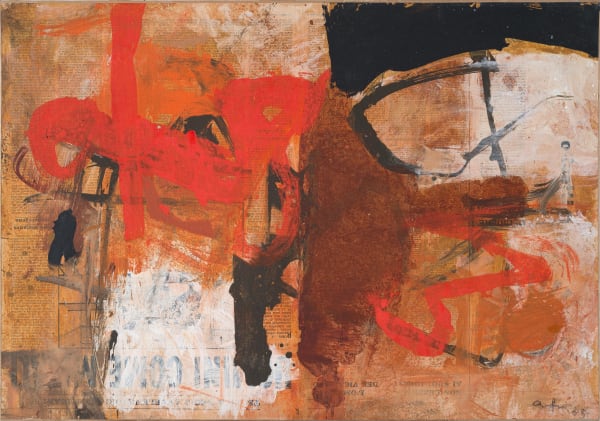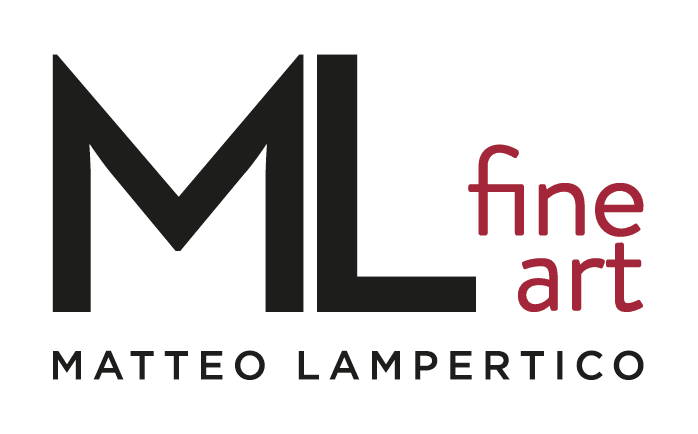Giacomo Balla Italy, 1871-1958
Giacomo Balla was a signatary of the Futurist Manifesto in 1910 and key proponent of the movement. Before adhering to Futurism, Balla had been a teacher of Divisionist to Umberto Boccioni, Gino Severini and Mario Sironi, he was later influenced by Filippo Tommaso Marinetti to adopt the Futurist style. In his paintings he depicted light, movement and speed. He was concerned with expressing movement in his works, tending towards the witty and whimsical, he was inspired by chronophotographic experiments led by Marey and Muybridge.
After Boccioni's death in 1916 he started signing all his works with the pseudonym "FuturBalla". Balla was a polymath, he produces Paroliberist works, designed objects, scenes for Ballet Russes.
Giacomo Balla was born in Turin in 1871.
Since he was young, he showed interest in art: he started studying the violin, but soon abandoned music to devote himself to painting and drawing. From 1891, after finishing high school, he attended the Albertina Academy of Fine Arts. In 1895 he left Turin to settle with his mother in Rome, and in 1900 he left for Paris to visit the Exposition Universelle. Here he sees the works of the Impressionist painters, the "pointillistes", and is attracted by the photographic studies of Marey's movement.
Returned to Italy, approaches the new technique Divisionist, becoming a promoter and immediately finding a good following of pupils (including Boccioni, Severini and Sironi). In the following years Giacomo Balla intensified his studies on light and movement.
In February 1909 Filippo Tommaso Marinetti published the Manifesto del Futurismo in the newspaper Le Figaro. Balla is deeply attracted by Marinetti's ideas.
From his meeting with Umberto Boccioni, Carlo Carrà, Luigi Russolo and Gino Severini, Futurism in art was born.
In 1910 Balla signed the Manifesto dei Pittori Futuristi, which was immediately followed by the Manifesto Tecnico della Pittura Futurista. The analysis of movement, through its decomposition into successive phases reproduced simultaneously, appears in famous works, such as Bambina che corre sul balcone and Dinamismo di un cane al guinzaglio, of 1912.
In 1914 he signed the futurist manifesto Le vêtement masculin futuriste which was followed a few months later by the Italian edition entitled Il vestito antineutrale, a publication accompanied by figurines and models. It is an invitation to adopt futurist aesthetics through clothing, theorizes and proposes to replace the old, gloomy and stuffy men's clothing with a more dynamic, bolder and colorful, asymmetrical, breaking with tradition and adapting to the futurist concept of modernity and progress, a dress that also refers to the war and makes the man more aggressive and festive.
In 1915, he signed, together with Fortunato Depero, the Manifesto della Ricostruzione futurista dell'Universo.These are years of intense work: Balla is dedicated to experimentation with materials and deals with the creation of sets, furniture and clothing. He also makes cinematographic experiments.
Between 1914 and 1915 is actively engaged in favor of the intervention of Italy in the war.
In 1925 Giacomo Balla participates with Depero and Prampolini at the Exposition des Arts Décoratifs in Paris. In 1929 he signed the Manifesto dell'Aeropittura futurista, which marks his last act of adherence to Futurism.
During the '30s Balla dissociates himself from the movement, in the belief that "pure art" can be discovered only in absolute realism. From now on, his works will be characterized by a figurative type of painting, similar to that of the beginning, but with less impact.
Giacomo Balla dies in Rome in 1958.
-

Arte in Nuvola 2024
BOOTH B30 - C29 21 - 24 Nov 2024ML Fine Art is pleased to announce its participation to Arte in Nuvola 2024, that will take place in Rome from 21 to 24 November....Read more -

BIAF 2022
24 Sep - 2 Oct 2022ML Fine Art is pleased to announce the participation in BIAF Florence 2022. On this occasion our booth will showcase gallery's recent discovery, two panels,...Read more

